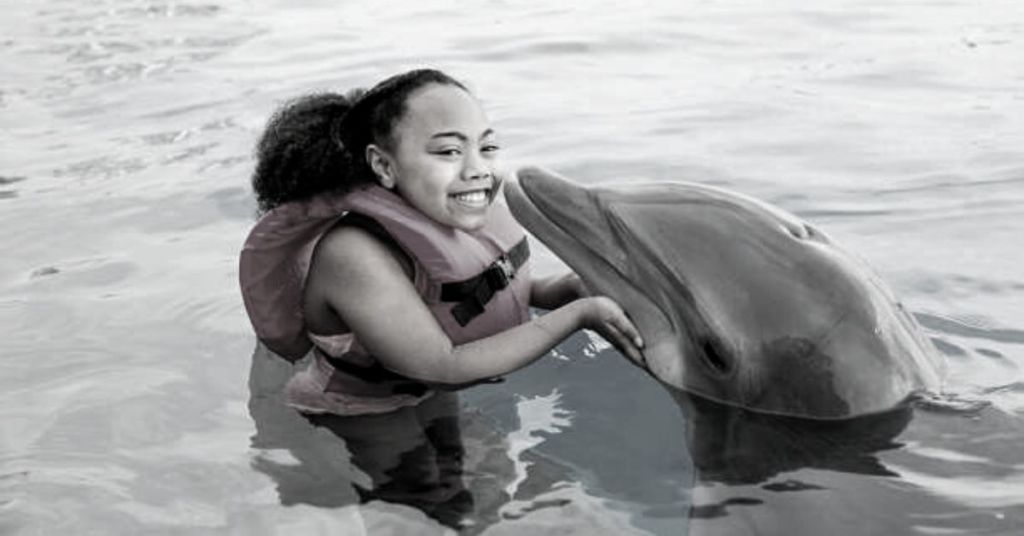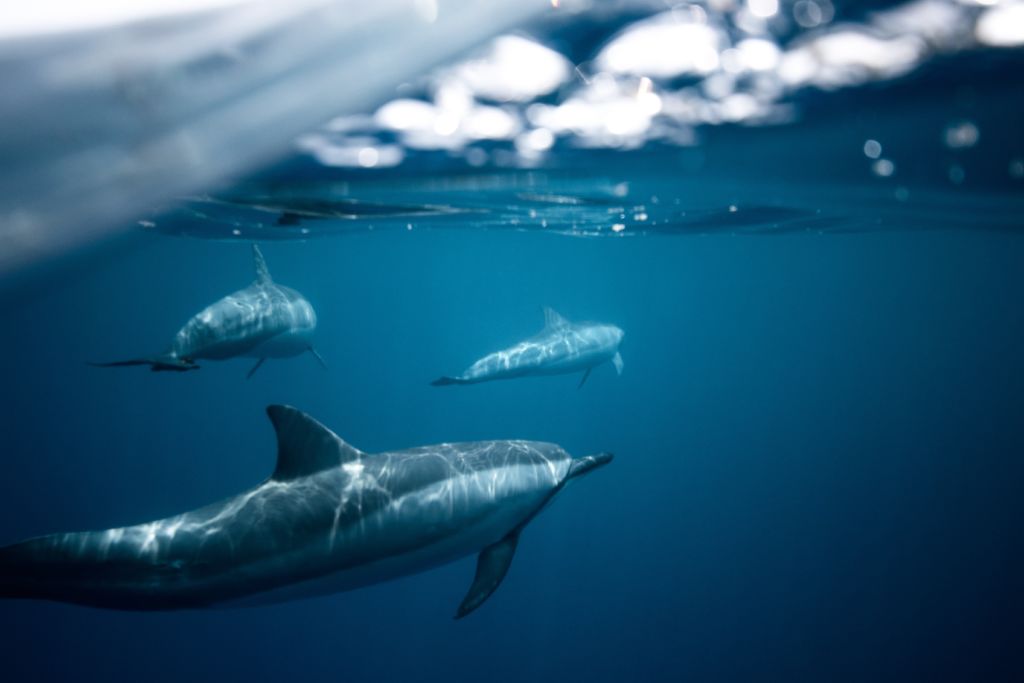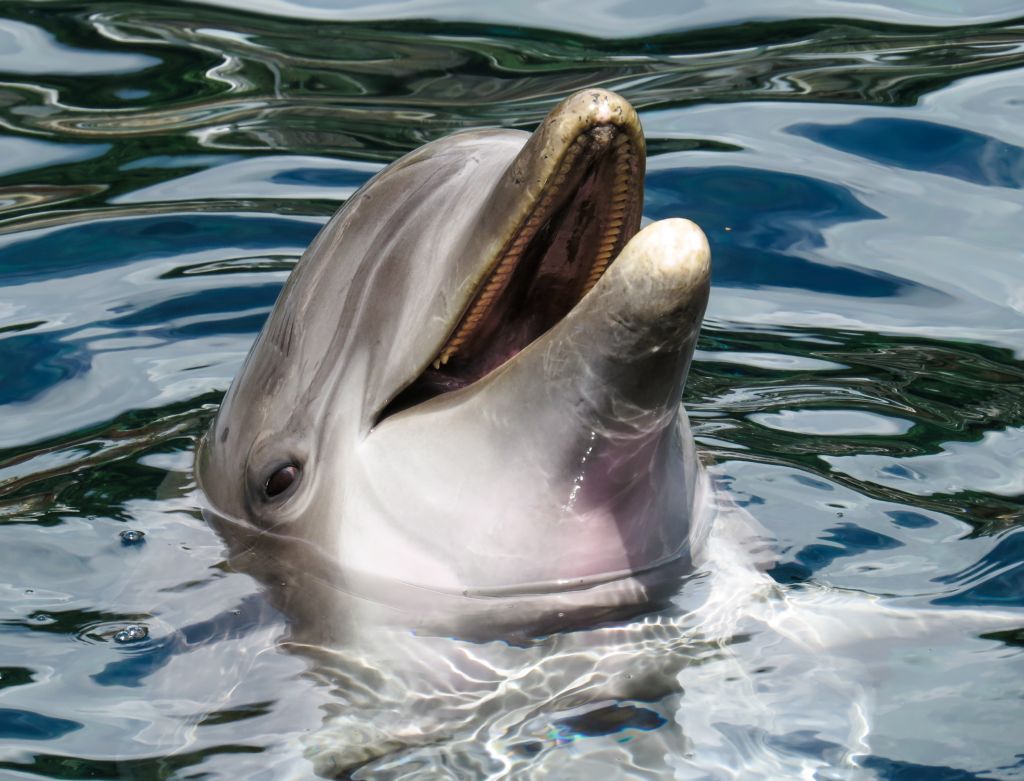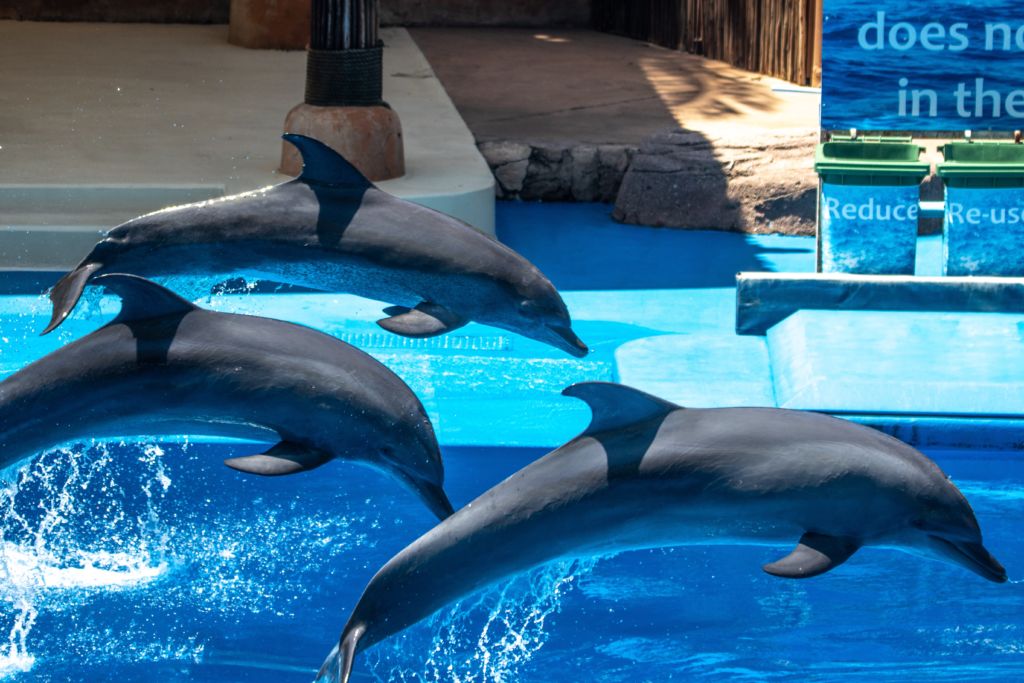How Forcing Malta’s Captive Dolphins To Swim With Humans Distresses Them

Dolphin centres all over the world often offer the chance for visitors to have a swim with the cetaceans, with children often pictured petting the sensitive mammals.
But how much thought has actually gone into this? And how much has the level of distress inflicted on the dolphins been factored into that?
As part of Lovin Malta’s ongoing collaboration with Animal Liberation Malta and Ecomarine Malta, we spoke with Katya Borg and Francesca Soster to hear more about forcing dolphins to swim with humans stresses them out.
First off, what are SWD packages?
Swim-with-dolphins packages are frequently offered by the facilities and advertised as an educational and unique ‘once-in-a-lifetime’ experience.
“Dolphins are therefore forced to interact with humans for a relatively long period of time repeatedly during the day,” Soster explained.
“Several reasons make this practice detrimental to dolphins’ wellness, including the inability for them to escape from swimmers when they don’t want any interaction.”

What risks do dolphins face?
“Fear and anxiety have in fact been diagnosed and frequently treated with medication as a result of interactions with swimmers.”
“Frustration and aggression have been reported due to the coerced physical contact with visitors, making a retreat space necessary for the dolphins involved.”
Due to dolphins having very sensitive skin, they can easily be harmed by fingernails or jewellery, while their exposure to foreign pathogens brought into their tank through visitors raises concerns about their health.
“Likewise, pathogens including rashes, viral dermatitis, conjunctivitis, and fungal infections can be transferred to humans. Several incidents and injuries to adults and children have finally been reported due to collisions, bites, and butting or pulling attempts.”
“When treating stranded wild animals certain precautions always apply – such as the use of gloves and face-masks.”
“Yet, children are often invited to kiss dolphins and come close to their blowhole (through which the animal breathes). Many illnesses can be passed from dolphins to human visitors, including viral, fungal, and bacterial infections such as salmonella.”
SWD packages do not only represent a stressful activity for dolphins but also a risk to human health.

And what about the risks to humans?
“In a report to the US Marine Mammal Commission (MMC), researchers from the University of California highlighted the potential health risks to which humans are exposed through contact with marine mammals such as skin rashes, infections, respiratory diseases, including diseases such as tuberculosis and potential infectious diseases,” Borg explained.
“The threat of injury is also very real as dolphins captured from the wild are still unpredictable animals no matter how much training or tranquillisers they are subjected to.”
“Broken bones, bites, lacerations, and even human deaths have been recorded in dolphinaria worldwide. Dolphins are, after all, very strong and aggressive predators as other large mammals such as the lion – would you risk entering its cage?”
“Despite what dolphinaria may have you believe, dolphins are apex ocean predators, capable of even killing sharks, and should be treated as such.”
Dolphins are indeed capable of being aggressive toward people, other dolphins, or even themselves.
“While the majority of dolphins in America are bred in captivity, they are not domesticated animals. Pushing people into deeper water, head-jerking, and biting causing broken bones, skin abrasions and other injuries have all been reported with direct contact interactions with dolphins.”

Countries have started to ban SWD packages
SWD programs have recently been banned in the Quintana Roo region in Mexico, which accounts for almost 7% of all dolphins held in confinement worldwide and which represents the largest dolphin captivity industry in all of Latin America.
SWD programs were also banned in Italy in 2018 “for ethical and legal reasons”, through the Implementation of Directive 1999/22/EC on the keeping of wild animals in zoos.
“A growing branch of the SWD programs is Dolphin-Assisted Therapy (DAT), which is believed to have a therapeutic effect on human health, especially targeting people suffering from, among other conditions, Down’s Syndrome, cerebral palsy, cancer, head and spinal injuries, or autism.”
“However, several peer-reviewed scientific papers have shown that there is no evidence that DAT has any therapeutic impact.”
“Yet it remains a lucrative way to exploit dolphins while giving false expectations to vulnerable people.”
This is the fifth article written by Lovin Malta together with Animal Liberation Malta and Ecomarine Malta.
Find the others here: article one, article two, article three, and article four.
Share to raise awareness on the distress dolphins in captivity face
